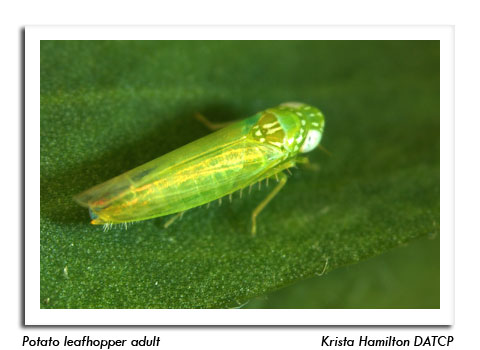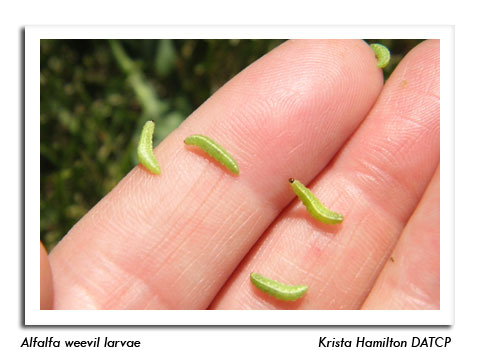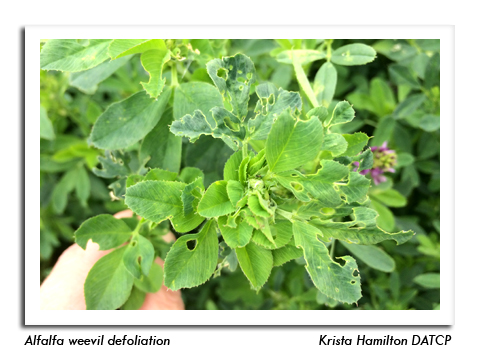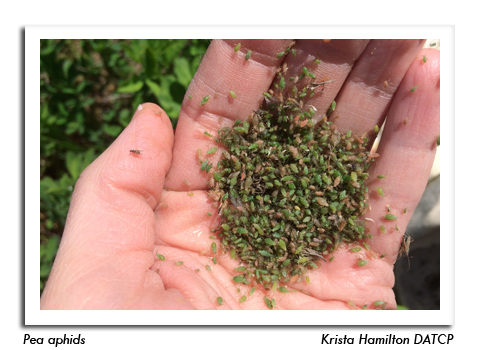
 |
|
|
Forages & Grains
Volume 62 Number 19 Date 11/09/2017 POTATO LEAFHOPPER - Populations briefly surged above threshold in early July, but were otherwise low or moderate throughout the season. Migrants began arriving in the state during the week of May 11-17 and nymphs first appeared around June 16. Counts in alfalfa averaged less than one per sweep until the latter half of June when a pronounced increase occurred in some western fields. Surveys from July 6-19 found late second-crop fields with extremely high counts of 5-21 per sweep, though most sites sampled during that period had averages in the range of 1-2 per sweep. Abnormally heavy July rain and late harvesting quickly brought populations under control, and levels remained low throughout August. Economic counts of two or more leafhoppers per sweep were observed in fewer than 4% of the 538 alfalfa fields surveyed in 2017, and chemical control was generally not necessary after mid-July. ALFALFA WEEVIL - Larval emergence began in southern Wisconsin by May 9. Counts increased throughout May to reach peak levels during the first week of June. Delayed alfalfa harvesting permitted weevil feeding to intensify from June 1-15 and economic defoliation exceeding the 40% threshold developed in a few fields. Pupae were observed on June 7. Carryover of larvae into the second crop was common, but defoliation was minor and the primary larval damage period ended by late June as remaining larvae pupated. PEA APHID - Counts peaked at approximately 37 aphids per sweep from June 1-7 then decreased noticeably after the first cutting. Surveys found very low populations during the balance of the season and no direct yield impact to alfalfa was attributed to this insect in 2017. -- Krista Hamilton, DATCP Entomologist 



|
|
|